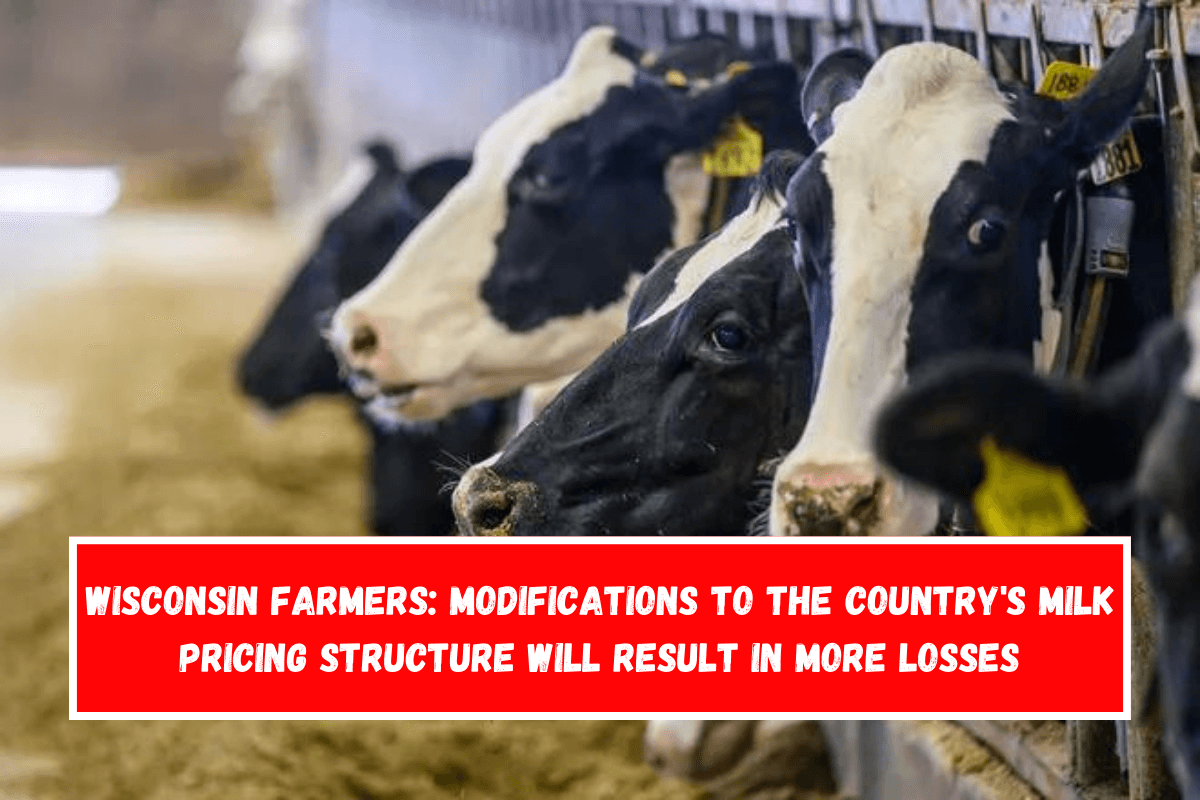Groups of Wisconsin farmers are worried about plans to change how milk is priced across the country.
In July, the U.S. Department of Agriculture put out a plan to update the formulas used by government milk marketing orders to set prices.
The 11 marketing orders, which are split up by area and cover about 75% of all milk produced in the U.S., tell farmers how much they must be paid for their milk.
The complicated method was made in the 1930s to protect farmers’ prices and make selling the quickly going bad product more organized. But because of the current rules, farms lost money when the COVID-19 pandemic caused problems in the market. This led the dairy industry as a whole to call for changes to be made to the system.
You have until this Friday to give the USDA your thoughts on their draft of the new price rules.
Wisconsin Farm Bureau’s head of national affairs, Tyler Wenzlaff, said that one of the USDA’s plans would fix the issue that caused milk checks to be less than expected in 2020 and 2021.
But he also said that the government agency wants to raise make allowances, which are a premium that farmers pay to dairy processors to help cover the cost of making cheese, butter, and other products from milk.
Wenzlaff said, “The math doesn’t work out.” “The farmer gets fifty cents in change, but the processor gets seventy cents.” That means there is a net loss.
He said that Wisconsin dairy farmers would be better off sticking to the current rules instead of the USDA’s plan because they sell their milk for less than the price of cheese and butter.
It took years of work to get a better system for farmers, and Wenzlaff said that the end result is “beyond frustrating” and will only cause more Wisconsin farms to leave the dairy business or close for good. More than 2,000 dairy farms have closed in Wisconsin in the last five years. That’s 28% of all listed herds.
The president of the Wisconsin Farmers Union, Darin Von Ruden, said that his group is also unhappy with the planned changes. He said that he thinks it was a missed chance to make the price of milk more fair.
“Processors are getting a make allowance that makes sure most of them will be making a profit,” Von Ruden, a dairy farmer for the third generation, said. While this is going on, farmers will continue to get less of that customer dollar because processors will be getting more money for their goods.
Von Ruden said that his group had hoped that the federal government would think about bigger changes to how milk is priced, either by changing the federal milk marketing orders or passing a new farm bill, which has been put off for almost a year.
“It’s frustrating that we have failed on every front so far,” he said.
Wenzlaff said it’s not likely that the USDA will make big changes to the new rules, even though the plan could change after this week’s public comment period ends.
The farmer groups in each milk marketing order region will then vote on the plan. But Wenzlaff said that if Wisconsin farmers voted “no” to the new pricing rules, they would no longer be covered by the government service.
He said, “If you don’t have an order, you lose some of the protections that come with that.” “You no longer have a promise that you will be paid every two weeks.”
You no longer have a promise that you will be paid on time. Farmers should get involved and say something about this, but they should also know what will happen if the vote is “no.”
He said that the Wisconsin Farm Bureau is working with experts at the University of Wisconsin–Madison to set up a series of talks in the next few months to help farmers learn more about their choices before what is likely to be a vote in December.











Leave a Reply